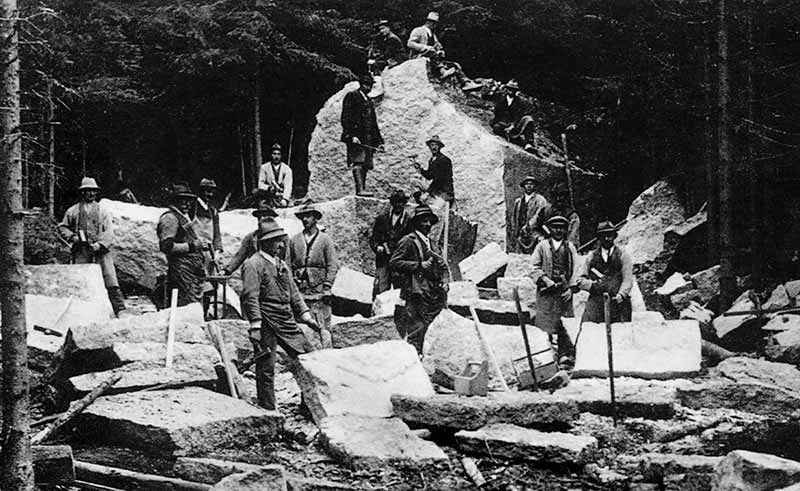Granite monument pillars like these are typical for our region. Many such commemorative or protective markers have been preserved at the entrances to towns or along paths.
Who would have built this wayside shrine? Was it a stonemason, a guild master, or a journeyman? Or was it a so-called “tinker” or “amateur”? These were craftsmen without a license, against whom the guilds often took legal action.
The master craftsmen from the southern Bavarian Forest east of the River Ilz belonged to the Passau stonemasons’ guild. The busy Hauzenberg stonemasons would have liked to found their own guild, but the Prince-Bishop of Passau forbade them to do so. He was the sovereign here, in the so-called “Land of the Abbey,” and insisted on the old order.
Towards the end of the 18th century, things gained momentum. The sovereign, the Bishop-Prince of Passau, now promoted the use of granite in order to save wood. This marked the beginning of a great upswing in the stonemasonry trade. Stone increasingly replaced wood as a building material.
A good example of this are the water distribution stones. These “standers,” as they were colloquially known, were now increasingly made of granite. One of these distribution stones can be found in the corner to the right. It comes from Raßberg, today a district of Hauzenberg, and at the time, it distributed water equally among five stakeholders with water rights.
Yes, the stonemasons and stonecutters now had their hands full. At the octagonal column behind you, I’ll tell you about a very special and sensational project.
